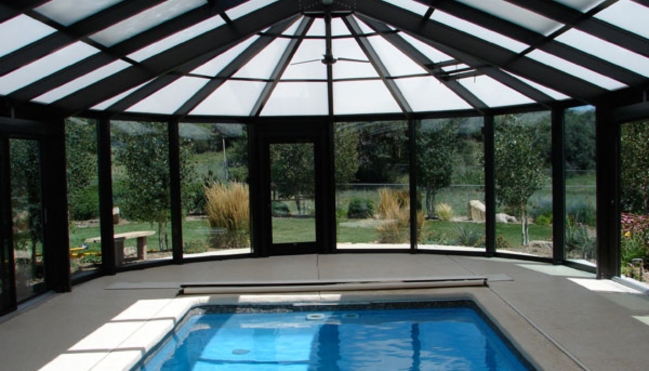
Polycarbonate sheets are a versatile and durable solution for various construction projects, including roofing, skylights, and shelters. Their lightweight, impact-resistant, and transparent properties make them a favorite choice for both residential and commercial applications. This guide provides a detailed, step-by-step process for polycarbonate sheet installation, ensuring a professional and long-lasting finish.
Understanding Polycarbonate Sheets
What Are Polycarbonate Sheets?
Polycarbonate sheets are thermoplastic panels known for their exceptional strength, weather resistance, and flexibility. These sheets are widely used in:
- Polycarbonate roofing sheets for carports, patios, and greenhouses.
- Skylights to allow natural light indoors.
- Shelters and shades for outdoor protection.
Types of Polycarbonate Sheets
- Solid Polycarbonate Sheets: Transparent like glass but far more impact-resistant.
- Polycarbonate Hollow Sheets: Lightweight and excellent for thermal insulation, commonly used in roofing.
- Corrugated Polycarbonate Sheets: Ideal for strength and water drainage in roofing applications.
Advantages of Polycarbonate Sheets
- Durability: Highly resistant to impact and weather conditions.
- Lightweight: Easier to handle and install compared to alternatives.
- UV Protection: A UV-coated side prevents yellowing and extends sheet life.
- Versatility: Suitable for roofing, shelters, and decorative purposes.
- Cost-Effective: Polycarbonate sheets offer a budget-friendly yet durable solution.
Essential Tools and Materials
A sturdy framework is crucial for successful polycarbonate sheet installation.
- Use durable materials like treated wood or metal for the frame.
- Ensure that the structure is clean, level, and free of sharp edges.
- Space the supports based on the sheet type and thickness. Polycarbonate hollow sheets may need closer spacing for stability.


Step-by-Step Installation Process
1. Preparing the Framework
A sturdy framework is crucial for successful polycarbonate sheet installation.
- Use durable materials like treated wood or metal for the frame.
- Ensure that the structure is clean, level, and free of sharp edges.
- Space the supports based on the sheet type and thickness. Polycarbonate hollow sheets may need closer spacing for stability.
2. Measuring and Cutting the Sheets
- Measure and mark the desired dimensions on the polycarbonate sheet using a marker or chalk.
- Allow for thermal expansion by leaving 2–3 mm of space per meter.
- Use a circular saw with a fine-toothed blade to make precise cuts. Ensure the edges are smooth to avoid cracks during installation.
3. Drilling Pre-Holes
- Drill holes at least 2 inches away from the edges of the polycarbonate sheet to prevent cracking.
- Use a drill bit slightly larger than the screw diameter to allow for thermal movement.
- Space the holes evenly, approximately 12–18 inches apart, depending on the application.
4. Placing the Sheets on the Framework
- Position the polycarbonate sheets with the UV-coated side facing outward to protect against sunlight.
- Overlap the sheets by at least 50 mm or one corrugation for corrugated sheets to ensure proper water drainage.
- Ensure the alignment is correct for efficient water flow and visual appeal.
5. Securing the Sheets
- Use screws with rubber washers to fasten the sheets securely to the frame.
- Avoid over-tightening screws, as it can create stress points and cause cracks.
- Seal the joints and overlaps with silicone sealant for added waterproofing.
Best Practices for Polycarbonate Sheet Installation
Proper Orientation
The UV-coated side must face outward to ensure long-lasting performance. Incorrect orientation can result in yellowing or reduced durability.
Thermal Expansion
Always account for thermal expansion. Leave sufficient gaps in drilled holes and overlaps to prevent warping during temperature fluctuations.
Avoid Over-Tightening Screws
Tighten screws only until the sheet is snug against the frame. Over-tightening can damage the polycarbonate sheet and reduce its lifespan.

Applications of Polycarbonate Sheets
1. Roofing
Polycarbonate roofing sheets are ideal for creating lightweight, transparent, and weather-resistant roofs for patios, pergolas, and warehouses.
2. Skylights
Polycarbonate sheet skylights allow natural light to brighten indoor spaces without compromising on strength or weather resistance.
3. Greenhouses
A Polycarbonate hollow sheet is excellent for greenhouses as it provides thermal insulation and light diffusion, creating an optimal environment for plant growth.
4. Shelters and Awnings
Polycarbonate shades are widely used for outdoor shelters like carports, walkways, and bus stops due to their durability and UV protection.
Maintenance Tips for Longevity
1. Cleaning
- Use a soft sponge and mild soap to clean the polycarbonate sheets.
- Avoid abrasive materials or harsh chemicals that can scratch or damage the surface.
2. Regular Inspections
- Periodically check for loose screws, worn sealant, or cracks in the sheet.
- Promptly replace damaged components to maintain the structural integrity of the installation.
3. Protect Against Sharp Objects
Avoid contact with sharp tools or heavy impacts to prevent scratches and cracks on the polycarbonate roof sheets.
Polycarbonate Sheet Cost & Value
The polycarbonate sheet price varies based on the sheet type, thickness, and brand. While solid sheets are more expensive, they provide superior durability and clarity. Corrugated sheets are cost-effective and commonly used for roofing. Comparing local vendors or searching for “polycarbonate sheets near me” can help secure the best deals.

Conclusion
Installing polycarbonate sheets is a straightforward process that delivers long-term durability and versatility. Whether you’re working on a greenhouse, a patio roof, or a skylight, these lightweight yet strong panels offer excellent value. By following the outlined steps and best practices, you can ensure a professional installation that withstands the elements while enhancing the aesthetics of your project.
Read More Articles About Polycarbonate Sheets
- 5 Maintenance Tips for Your Polycarbonate and Steel Shades for Commercial Buildings
- Creative Ideas for Window & Balcony Shed: From Design to Durability Made with Stainless Steel or Polycarbonate

Founder & CEO
Mukesh Patel is the Founder & CEO of Build Matt ltd, specializing in Pre-Engineered Buildings (PEB) and general steel fabrication. With advanced technology, modern machinery, and a skilled workforce, he delivers efficient and high-quality solutions across East and Central Africa, including Uganda, Kenya, Tanzania, Congo, South Sudan, Rwanda, and Burundi.
- CNC Plasma Cut Decorative Metal Panels: Revolutionizing Interior and Exterior Design
- Combining Roof Vents and Translucent Sheets for Better Airflow and Natural Lighting in Uganda Cities
- Top Design Trends in Steel Staircases for Modern Ugandan Buildings
- Steel Railings & Balustrades for Uganda Cities
- Modern Steel Silos & Hoppers : Transforming Grain Storage Efficiency in Uganda




